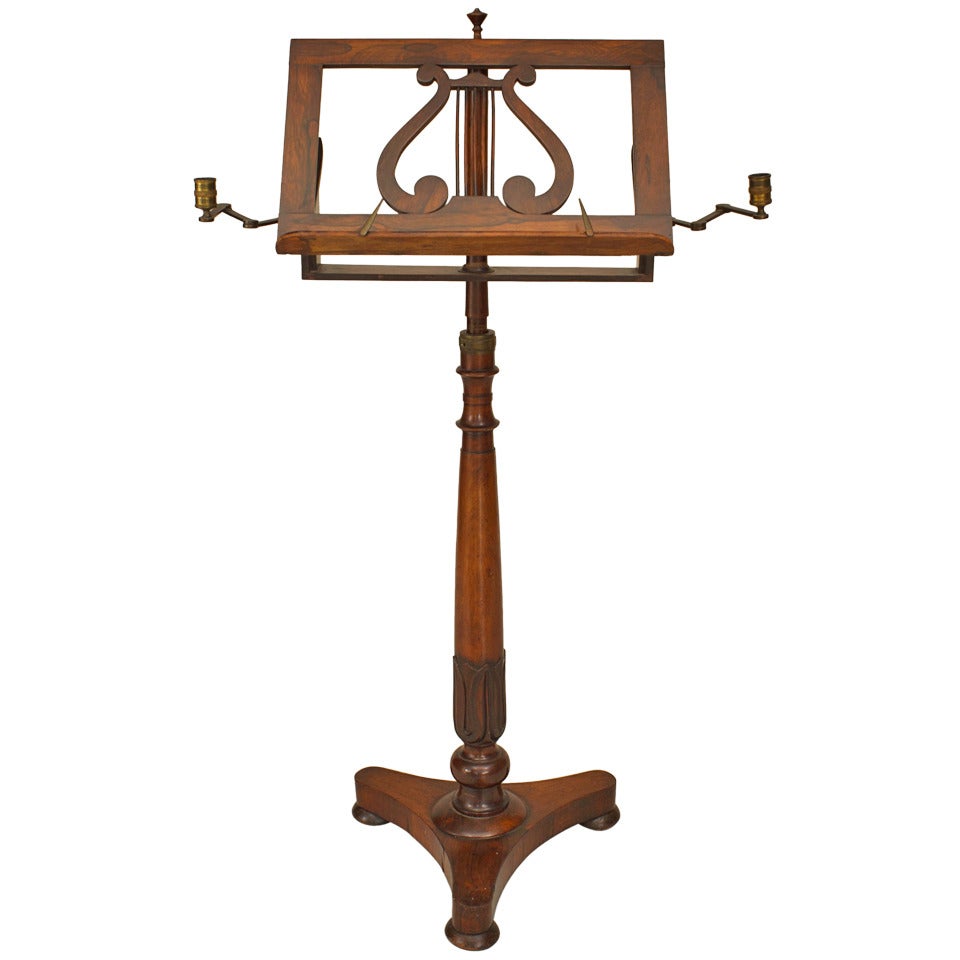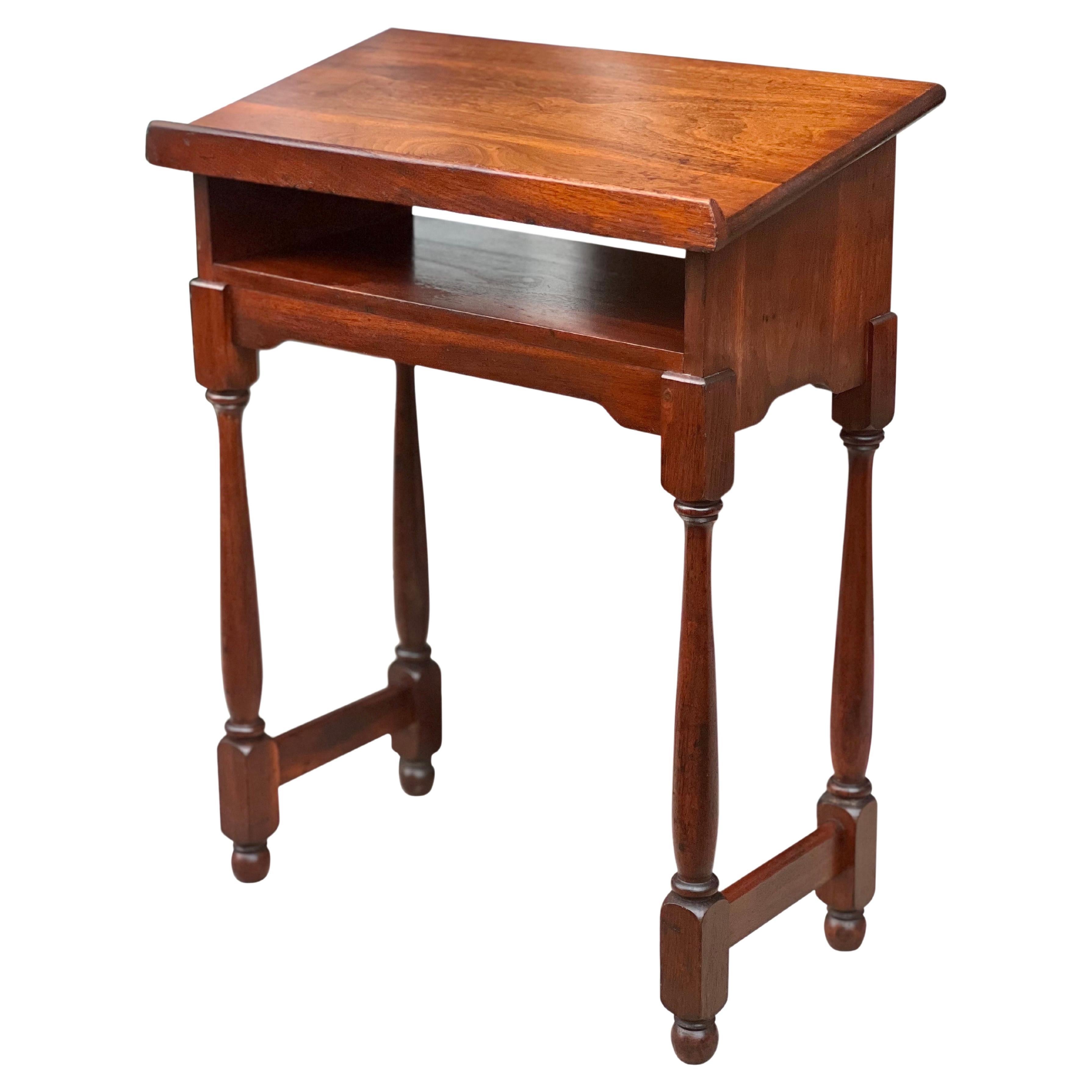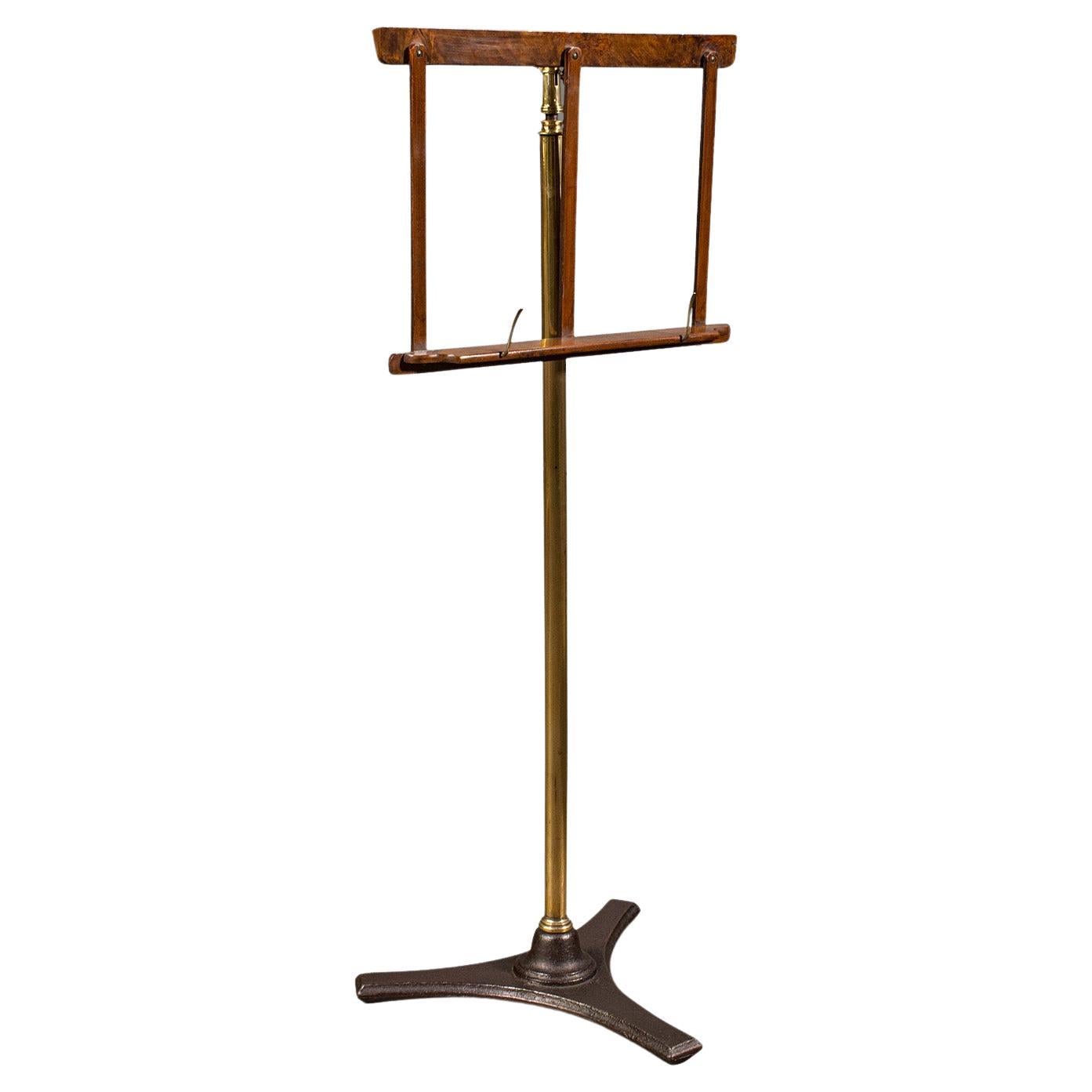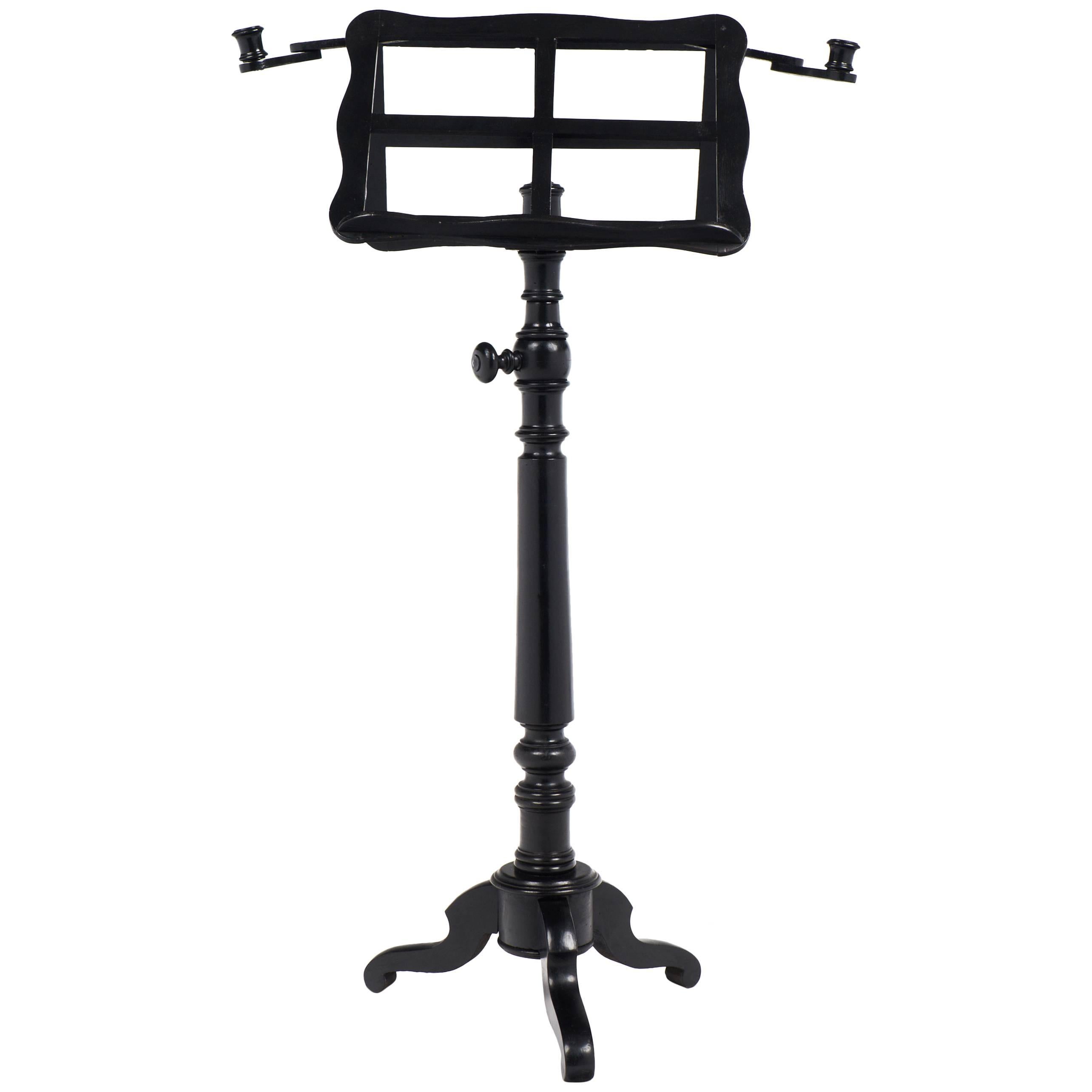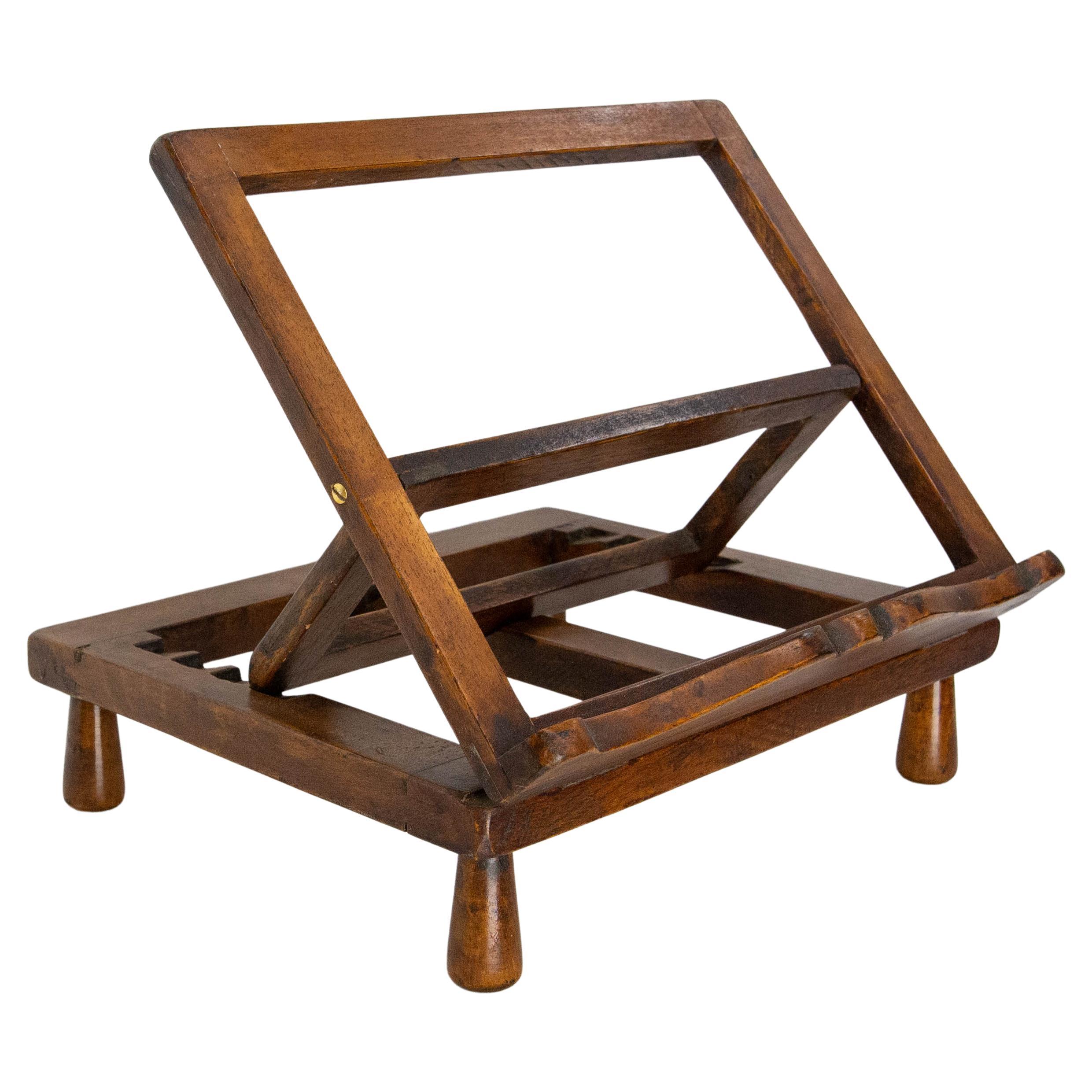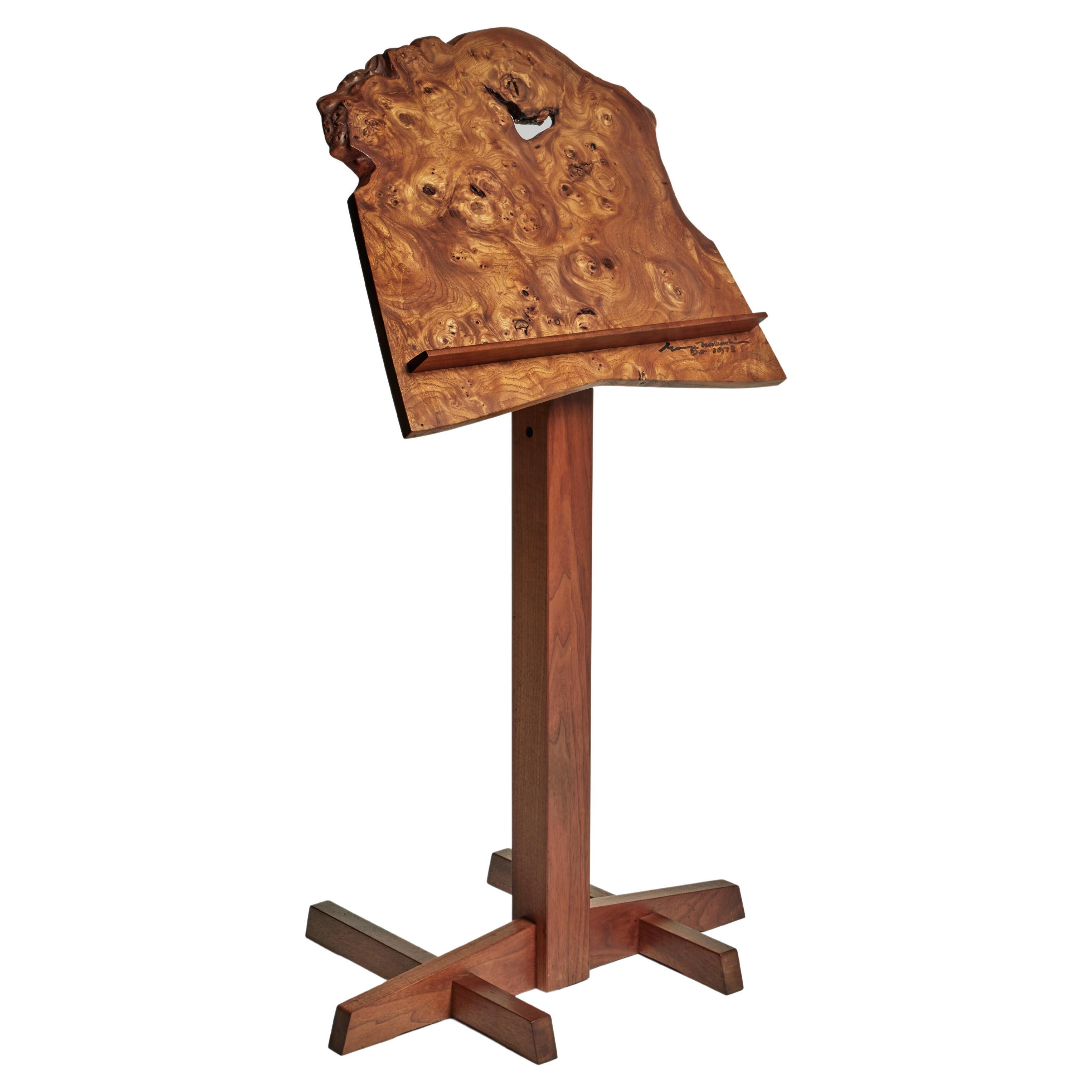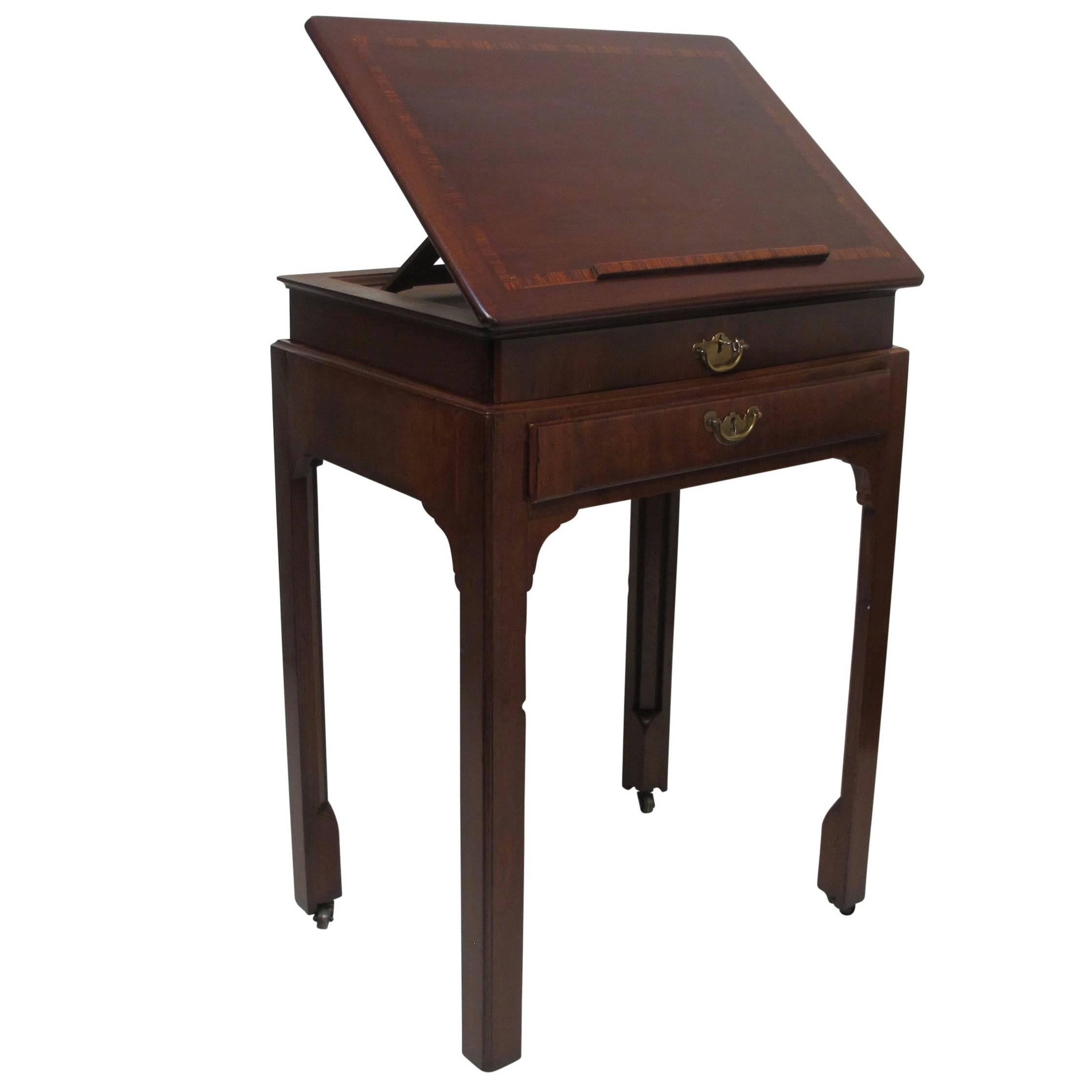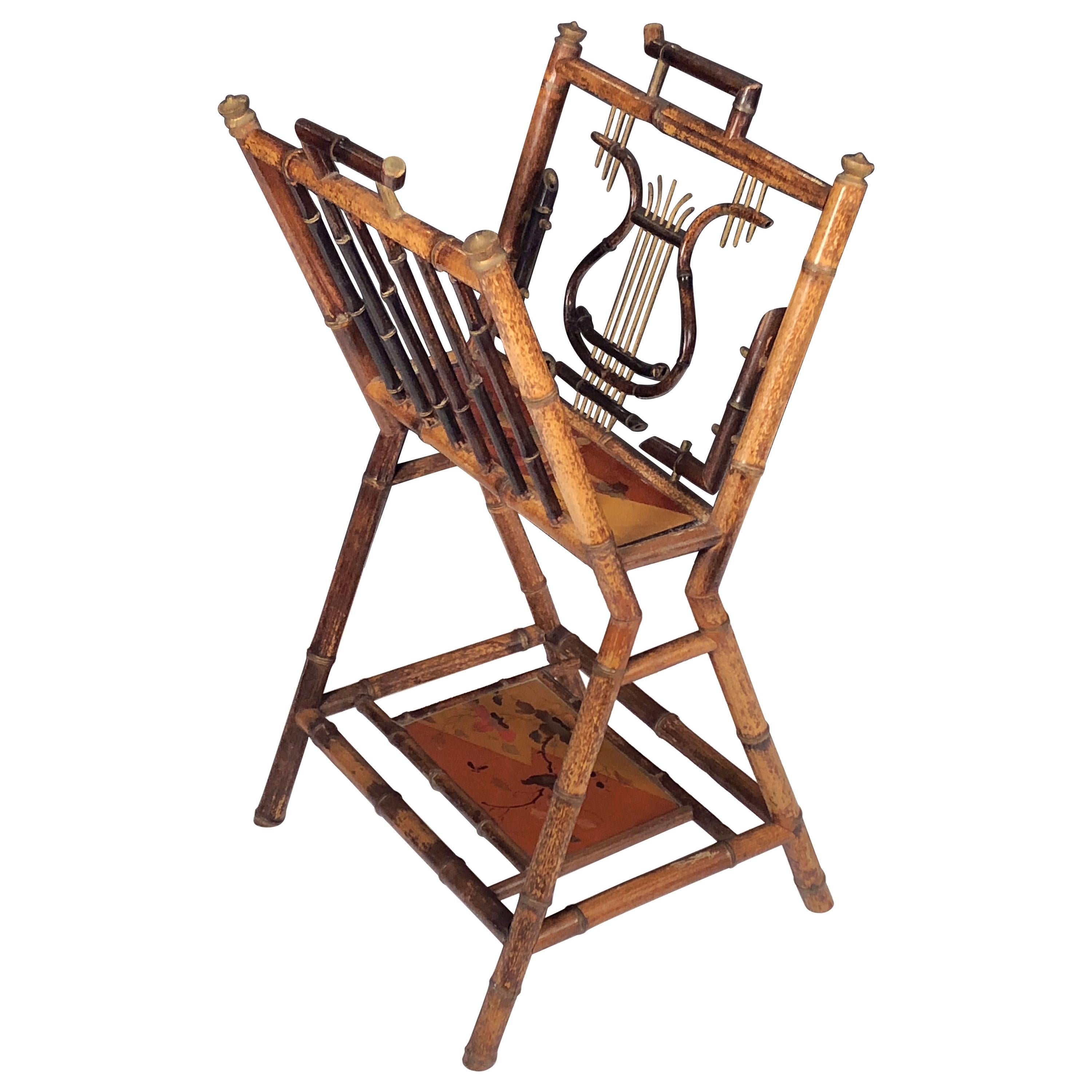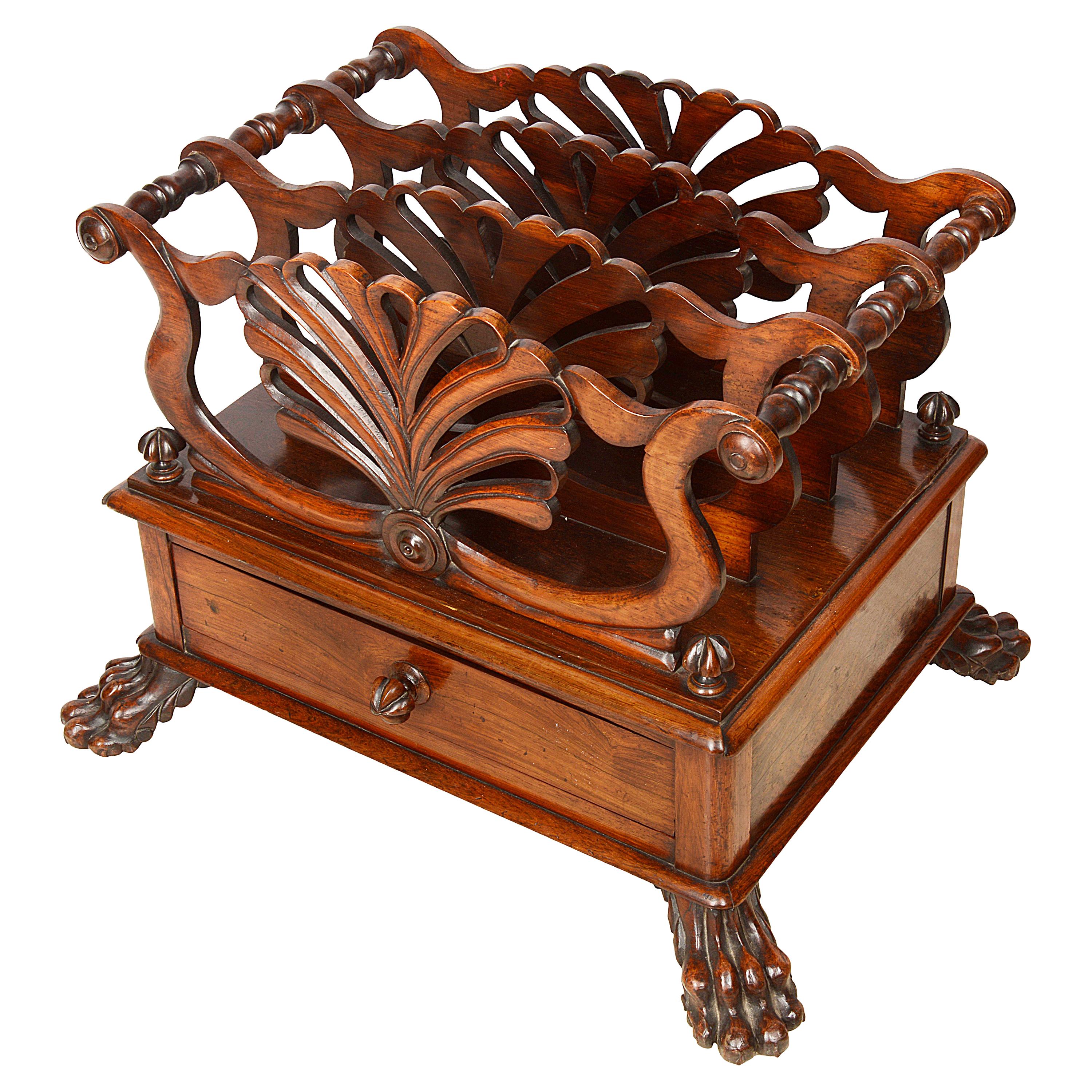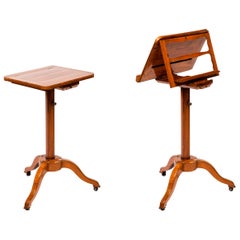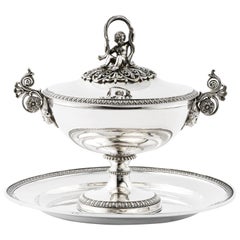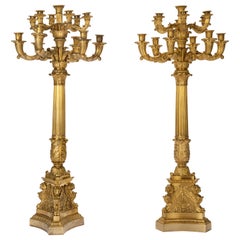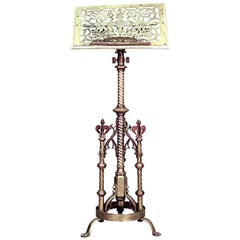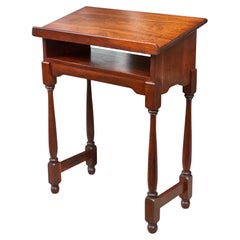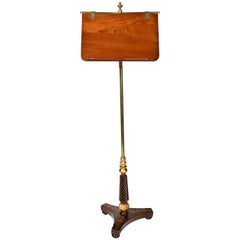
Regency George IV English Music Stand or Lectern, circa 1830
View Similar Items
Want more images or videos?
Request additional images or videos from the seller
1 of 21
Regency George IV English Music Stand or Lectern, circa 1830
About the Item
- Attributed to:Gillows of Lancaster & London (Maker)
- Dimensions:Height: 55.52 in (141 cm)Width: 18.23 in (46.3 cm)Depth: 12.8 in (32.5 cm)
- Style:Regency (Of the Period)
- Materials and Techniques:
- Place of Origin:
- Period:
- Date of Manufacture:circa 1830
- Condition:Minor structural damages. Minor fading. A tin weld on the joint fixing the mahogany board to the brass bar.
- Seller Location:Milano, IT
- Reference Number:1stDibs: LU4352219846262
About the Seller
4.3
Vetted Seller
These experienced sellers undergo a comprehensive evaluation by our team of in-house experts.
Established in 1860
1stDibs seller since 2018
19 sales on 1stDibs
Typical response time: 4 hours
Associations
International Confederation of Art and Antique Dealers' Associations
More From This SellerView All
- 18th Century Rosewood and Oak French Convertible Music Stand by N. GrevenichLocated in Milano, ITNicolas Grevenich Convertible music stand France, last quarter 18th century. Bois de rose and oak Measures: H 26.77 in; when open H max 44.09 in Top: 16.14 in x 12.79 in; when open...Category
Antique 1780s French Neoclassical Music Stands
MaterialsOak, Rosewood
- Italian Silver Puerperal Cup or Small Soup Tureen, Milan Circa 1830Located in Milano, ITSilversmith L. B. Small silver soup tureen or puerperal cup with plate and lid Milan, around 1830 Height 19.5 cm (7.67 in) - diameter 21.7 cm (8.54 in) lb 2.14 (kg 0.97) State of conservation: slight use defects and a dent on the plate. From about the mid-16th century, the puerperal soup tureen or puerperal cup became one of the most popular wedding gifts in central Italy. As an auspicious symbol, it replaced the birth table...Category
Antique 1830s Italian Neoclassical Sterling Silver
MaterialsSterling Silver
- 19th Century Pair of French or Russian Gilt Bronze Candelabra, circa 1830Located in Milano, ITPair of thirteen-flame candelabra France or Russia Second quarter of 19th century Cast, chiseled and gilt bronze Height 40.95 in (cm 104), diameter 17,7 in (cm 45) 97 lb (44 kg) Sta...Category
Antique 1830s French Neoclassical Candelabras
MaterialsOrmolu
- 19th Century Italian Sterling Silver Madonna, circa 1830Located in Milano, ITEmbossed and engraved silver plaque La Madonna del lago (The Madonna of the Lake) Probably Milan, post 1824 Brass frame It measures 16.14 in x 13.85 in (41 x 35.2 cm) and it weighs 10.357 pounds (4.698 g): silver 1.31 pounds (598 g) + brass 9.03 pounds (4.100 g) State of conservation: some abrasions on the bottom. The frame is old, but not original. The plaque is made up of a sheet of embossed and engraved silver, and held in a solid brass frame. It depicts the “Madonna del lago” – “Madonna of the Lake” - (the Madonna with Child and San Giovannino) by Marco d'Oggiono (Oggiono, 1474 circa - Milan, 1524 circa), while changing only the background landscape. Almost certainly the subject reproduced in the plaque was taken from a famous engraving by Giuseppe Longhi (Monza, 1766 - Milan, 1831), one of the greatest engravers of his era. The silver is unmarked, probably because originally the Madonna was due to be exposed in a church: sometimes precious metals destined for worship and liturgical use would be exempted from payment and were, therefore, not marked. It is very likely that the plaque was made in Milan because in this city in 1824 the engraving by Giuseppe Longhi was made and printed. In addition, in Milan, the alleged lost painting by Leonardo da Vinci in his Milanese period (1482-1500) would be produced; this is the painting from which Marco d'Oggiono took his version. The painting Marco d?Oggiono was one of Leonardo da Vinci's most brilliant students and collaborators (D. Sedini, Marco d’Oggiono, tradizione e rinnovamento in Lombardia tra Quattrocento e Cinquecento, Roma 1989, pp. 151-153, n. 56; p. 225, n. 124, with previous bibliography). His style reflects in every way that of the Tuscan Maestro, so much so that he was the one who executed some copies of da Vinci's paintings. The execution of the “Madonna del Lago” probably draws inspiration from a lost painting by the Maestro, created while he was living in Milan (1482-1500). There are many similarities with other works by Leonardo such as the “Vergine delle rocce” or the “Vergine con il Bambino e San Giovannino, Sant’Anna e l’Agnello”. The painting, from which the drawing and then the famous engraving were taken, is found today at the M&G Museum of Bob Jones University in Greenville, South Carolina, where it came to rest after the sale of the Harrington Collection in London in 1917. The work appears in the inventories of the collection of Napoleon and Joséphine Bonaparte at the castle of Malmaison, before 1809. The Malmaison building was born and developed in the 17th and 18th centuries. In the 18th century it belonged to Jacques-Jean Le Coulteux du Molay, a wealthy banker. Later, during the Directory, Joséphine Bonaparte de Beauharnais bought it on April 21st, 1799, but settled at the castle definitively only after her husband separated from her in 1809. She remained there until 1814, the year of her death. When Joséphine died, the estate passed to her son Eugène de Beauharnais, who moved to Munich with his whole family in 1815, bringing with him the collection of paintings he inherited from his mother. Eugène died in 1824 and his wife Augusta of Bavaria (von Bayern), unable to keep it, in 1828 sold the Malmaison to the Swedish banker Jonas-Philip Hagerman. It is likely that in this period Augusta also sold part of the paintings inherited from her husband, including the “Madonna del Lago”. This painting then came into the possession of Leicester Stanhope, fifth Earl of Harrington (1784 - 1862) and then was passed down to his descendants. In 1917, at the death of Charles, eighth Earl of Harrington, his brother Dudley inherited the title and properties and he put up a part of his collections for sale. Among these, precisely, the painting by Marco d'Oggiono was to be found. On the occasion of that auction the painting was presented as a work by Cesare da Sesto, by virtue of a handwritten note by the Countess of Harrington on the back of the table. However, already in 1857, the German critic Gustav Waagen had identified Marco d'Oggiono as the author of the painting, then exhibited in the dining room of Harrington House in London (Treasures of Art in Great Britain, in 4 volumes, London, 1854 and 1857). The engraving Giuseppe Longhi was one of the most renowned engravers in Italy between the end of the 18th century and the first quarter of the 19th century. In 1824 Giuseppe Longhi, based on a design by Paolo Caronni, made a famous engraving of the painting of Marco d?Oggiono. The activity of Longhi was then at the peak of his notoriety, enough to earn him very substantial commissions; it is not risky to suppose that some of his successful engravings were also reproduced using other means: in our case in silver. (A. Crespi, a cura di, Giuseppe Longhi 1766–1831 e Raffaello Morghen...Category
Antique 1820s Italian Neoclassical Sterling Silver
MaterialsSterling Silver, Brass
- Large Italian Neoclassic Sterling Silver Coffee Pot, Milan, Circa 1830Located in Milano, ITEmbossed and engraved silver coffee pot Antonio Garavaglia Milan, Circa 1830 It measures 16.92 in (43 cm) in height and weighs 3.35 lb (1.520 gr) State of conservation: very good The large silver coffee pot has a round mouthpiece with a marked everted rim on which a pagoda lid rests; this is surmounted by a cock-shaped knob with a border decorated with small pods...Category
Antique 1820s Italian Neoclassical Sterling Silver
MaterialsSterling Silver
- 19th Century Italian Sterling Silver Glass and Wine Coasters, circa 1830By Antonio MantelliLocated in Milano, ITTwelve silver glass coasters and four silver wine coasters. Silversmith Antonio Mantelli Milan, circa 1830 They measure: Glass coasters: 0.78 in high x 3.46 in diameter (2 cm x 8.8 c...Category
Antique 1820s Italian Neoclassical Sterling Silver
MaterialsSterling Silver
You May Also Like
- English Regency Rosewood Music StandLocated in New York, NYEnglish Regency rosewood pedestal base music stand with an adjustable lyre design rack and 2 side telescoping brass candleholders.Category
Antique 19th Century English Regency Music Stands
MaterialsBrass
- English Gothic Revival Brass Lectern / Music StandLocated in New York, NYEnglish Gothic Revival style (19th Cent) brass lectern/ music stand with filigree top and swirl center post.Category
Antique 19th Century English Gothic Revival Music Stands
MaterialsBrass
- Antique Colonial Revival Small Walnut Lectern or Music StandLocated in Doylestown, PAAntique Colonial Revival small walnut lectern, c. 1910-20. Wonderful lectern with rich walnut grain features classic slanted top, elegant turned spindle legs and lower open shelf. L...Category
Early 20th Century North American Colonial Revival Music Stands
MaterialsWalnut
- Regency Rosewood Music StandLocated in Essex, MAWith hinged trellis adjustable holder and hinged folding book rest raised on a reeded support headed by a brass knob to adjust height, raised on three saber legs with cup casters. Li...Category
Antique Early 19th Century English Regency Music Stands
MaterialsRosewood
- Antique Music Stand, English, Adjustable, Recital, Lectern Rest, Victorian, 1870Located in Hele, Devon, GBThis is an antique music stand. An English, walnut and brass adjustable recital or lectern rest, dating to the Victorian period, circa 1870. Hos...Category
Antique Late 19th Century British Music Stands
MaterialsWalnut
- French Antique Louis Philippe Music Stand LecternLocated in Austin, TXFrench Louis XVI style antique lectern or music stand of solid, ebonized wood, gleaming with a hand-rubbed French polish. Adjustable height and two candleholders on the double-sided ...Category
Antique Mid-19th Century French Louis Philippe Music Stands
MaterialsWood
$2,300 Sale Price28% Off
Recently Viewed
View AllMore Ways To Browse
Lectern Stand
Antique Brass Book Stand
Music Holder
Antique Mahogany Music Stand
Music Book Stand
Antique Music Stand Wood
Antique Wood Music Stand
Antique Brass Bar Tools
Gilt Book Stand
Antique Sheet Music Stand
Floor Book Stand
Book Stand Holder
Clip Board
Library Rack
English Hall Mahogany Cabinet
Book Tripod
George Tinning
Sheet Music Rack
